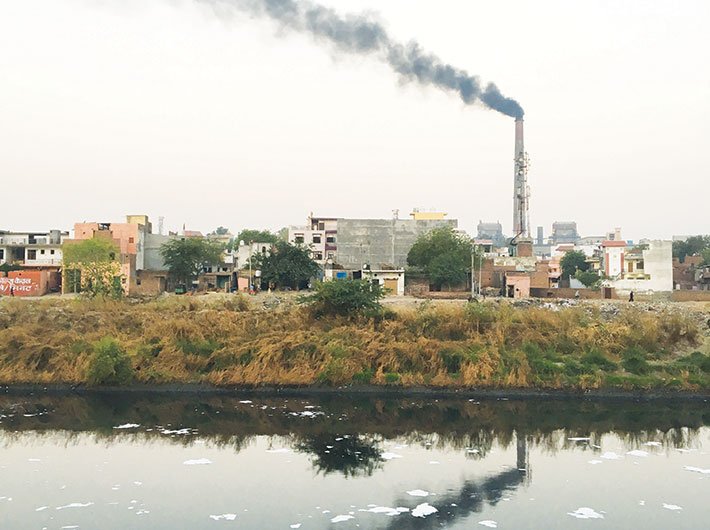Trump’s reversal is an opportunity to reframe climate change as a social and not a physical problem
In 2050 the USA and China would each have contributed around 16 percent of global cumulative emissions, while India’s share will be a mere eight percent even though it would be the second largest economy. This would require the country to become rule-makers and not just rule-takers to ensure that major emitters do not shift the problem to others.
At India’s insistence, the Paris Agreement includes a reference to “climate justice”. Now, taking advantage of US president Trump’s withdrawal, it should reframe the global concern in terms of human wellbeing, sharing responsibility and prosperity and reducing energy consumption.
In 2050, three-quarter to two-third of the global population, GDP and emissions of carbon dioxide will come from cities. This global trend requires reframing of the 25-year-old approach to equity based on historical emissions to the use of energy and the prevention of emissions as urbanisation spreads around the world. Energy will be at the core of the future discussion as global emissions have been flat for three years because of changing patterns of energy consumption.
Trump’s executive order reversing former president Obama’s climate policies, justified in terms of ‘energy independence’, will have limited impact on global emissions. Out of the five long-term strategies submitted to the United Nations Framework Convention on Climate Change (UNFCCC) secretariat by March 31, three are from G7 countries, which in 2009 decided to reduce aggregate emissions by at least 80 percent by 2050. While Germany’s long-term strategy indicates its intent to approach greenhouse gas (GHG) neutrality by 2050, the plans of the US do not explicitly identify when the countries’ emissions would reach net zero. Obama’s Clean Power Plan was designed to cut carbon dioxide emissions from electricity by 32 percent by 2030 compared to 2005 levels and the initiative has been in legal limbo since the supreme court stayed the order.
While Trump was signing the executive order, on the other side of the world the municipality of Beijing was releasing its plan for a greener city by 2030. The plan has three components. First, make 80 percent of commuting ‘green’ by extending the subway from the current 574 km to 1,000 km and cover 42 percent of downtown commuting (in Delhi phase IV will cover 434 km) and ensure 12.6 percent of commutes are by bicycles. Second, increase the green area to 45 percent of the land area of the city. Third, reduce the average concentration of PM 2.5 to 35 microns. They have asked for public comments, while analysts are sceptical about Trump’s actions, as well as those of Obama.
Global trends
Use of coal is already stabilising in the major emitting countries. Conventional power generation investment has essentially come to a halt in Europe, with recent investment in renewable-based and nuclear power capacity now largely covering electricity demand growth, two-third of China’s demand growth in 2016 was supplied by renewables and in North America in 2016 natural gas-fired generation exceeded coal’s share of the US electricity mix on an annual basis.
At the global level, energy consumption and economic development have been decoupling, with gross domestic product increasing by more than 90 percent between 1990 and 2014, while total primary energy supply grew by 56 percent. In this period energy intensity decreased by approximately 20 percent between 1990 and 2014; with the decrease in developing countries three times that in the developed countries.
The global middle class
In 2015 for all developed countries, energy efficiency was responsible for 80 percent of the reduction in energy consumption. Overall, transport is the largest end-use sector (35%), followed by manufacturing industry (23%) and the residential sector (21%). With rapid urbanisation in developing countries, the end-use sectors are emerging as responsible for the major share of global emissions, as in the developed countries.
There is going to be a faster expansion of the middle-class than at any time in history. By 2030, it is estimated that in the global middle class there will be 380 million in India, 350 million in China and 120 million in the rest of Asia, compared with 130 million in the rest of the world. This population shift will double consumer spending to $30 trillion and one-third of GDP growth will take place in Asia, with impact on energy end-use. The planning of cities to support public and shared transport and energy efficient buildings will be a key element in reducing the carbon-footprint of these countries and at the global level.
Trump’s withdrawal provides India the opportunity to shift the focus of long-term emission reduction strategies in the climate negotiations and at the national level to energy demand in the largest end-use sectors, the causes of the climate problem, rather than focus on emissions, which are the symptoms.
Sanwal is a former director of the United Nations Climate Change Secretariat.
(The article appears in the April 16-30, 2017 issue of Governance Now)

